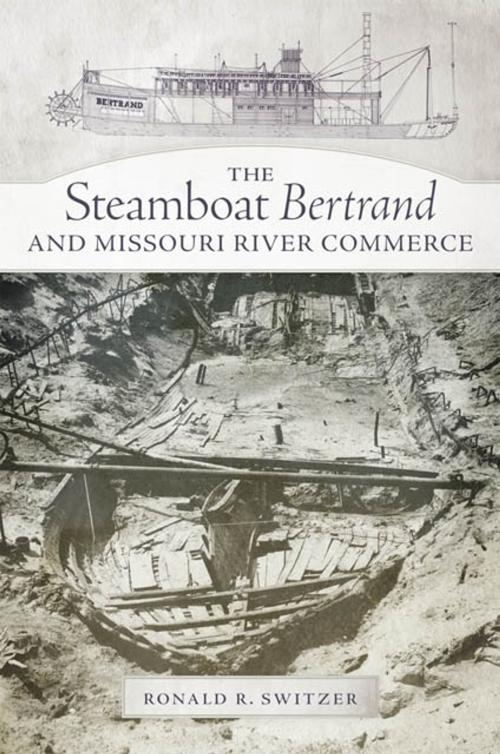The Steamboat Bertrand and Missouri River Commerce
Nonfiction, Reference & Language, Transportation, Ships & Shipbuilding, History, Americas, United States, 19th Century| Author: | Ronald R. Switzer | ISBN: | 9780806151304 |
| Publisher: | University of Oklahoma Press | Publication: | October 29, 2013 |
| Imprint: | University of Oklahoma Press | Language: | English |
| Author: | Ronald R. Switzer |
| ISBN: | 9780806151304 |
| Publisher: | University of Oklahoma Press |
| Publication: | October 29, 2013 |
| Imprint: | University of Oklahoma Press |
| Language: | English |
On April 1, 1865, the steamboat Bertrand, a sternwheeler bound from St. Louis to Fort Benton in Montana Territory, hit a snag in the Missouri River and sank twenty miles north of Omaha. The crew removed only a few items before the boat was silted over. For more than a century thereafter, the Bertrand remained buried until it was discovered by treasure hunters, its cargo largely intact. This book categorizes some 300,000 artifacts recovered from the Bertrand in 1968, and also describes the invention, manufacture, marketing, distribution, and sale of these products and traces their route to the frontier mining camps of Montana Territory.
The ship and its contents are a time capsule of mid-nineteenth-century America, rich with information about the history of industry, technology, and commerce in the Trans-Missouri West. In addition to enumerating the items the boat was transporting to Montana, and offering a photographic sample of the merchandise, Switzer places the Bertrand itself in historical context, examining its intended use and the technology of light-draft steam-driven river craft. His account of steamboat commerce provides multiple insights into the industrial revolution in the East, the nature and importance of Missouri River commerce in the mid-1800s, and the decline in this trade after the Civil War.
Switzer also introduces the people associated with the Bertrand. He has unearthed biographical details illuminating the private and social lives of the officers, crew members, and passengers, as well as the consignees to whom the cargo was being shipped. He offers insight into not only the passengers’ reasons for traveling to the frontier mining camps of Montana Territory, but also the careers of some of the entrepreneurs and political movers and shakers of the Upper Missouri in the 1860s. This unique reference for historians of commerce in the American West will also fascinate anyone interested in the technology and history of riverine transport.
On April 1, 1865, the steamboat Bertrand, a sternwheeler bound from St. Louis to Fort Benton in Montana Territory, hit a snag in the Missouri River and sank twenty miles north of Omaha. The crew removed only a few items before the boat was silted over. For more than a century thereafter, the Bertrand remained buried until it was discovered by treasure hunters, its cargo largely intact. This book categorizes some 300,000 artifacts recovered from the Bertrand in 1968, and also describes the invention, manufacture, marketing, distribution, and sale of these products and traces their route to the frontier mining camps of Montana Territory.
The ship and its contents are a time capsule of mid-nineteenth-century America, rich with information about the history of industry, technology, and commerce in the Trans-Missouri West. In addition to enumerating the items the boat was transporting to Montana, and offering a photographic sample of the merchandise, Switzer places the Bertrand itself in historical context, examining its intended use and the technology of light-draft steam-driven river craft. His account of steamboat commerce provides multiple insights into the industrial revolution in the East, the nature and importance of Missouri River commerce in the mid-1800s, and the decline in this trade after the Civil War.
Switzer also introduces the people associated with the Bertrand. He has unearthed biographical details illuminating the private and social lives of the officers, crew members, and passengers, as well as the consignees to whom the cargo was being shipped. He offers insight into not only the passengers’ reasons for traveling to the frontier mining camps of Montana Territory, but also the careers of some of the entrepreneurs and political movers and shakers of the Upper Missouri in the 1860s. This unique reference for historians of commerce in the American West will also fascinate anyone interested in the technology and history of riverine transport.















